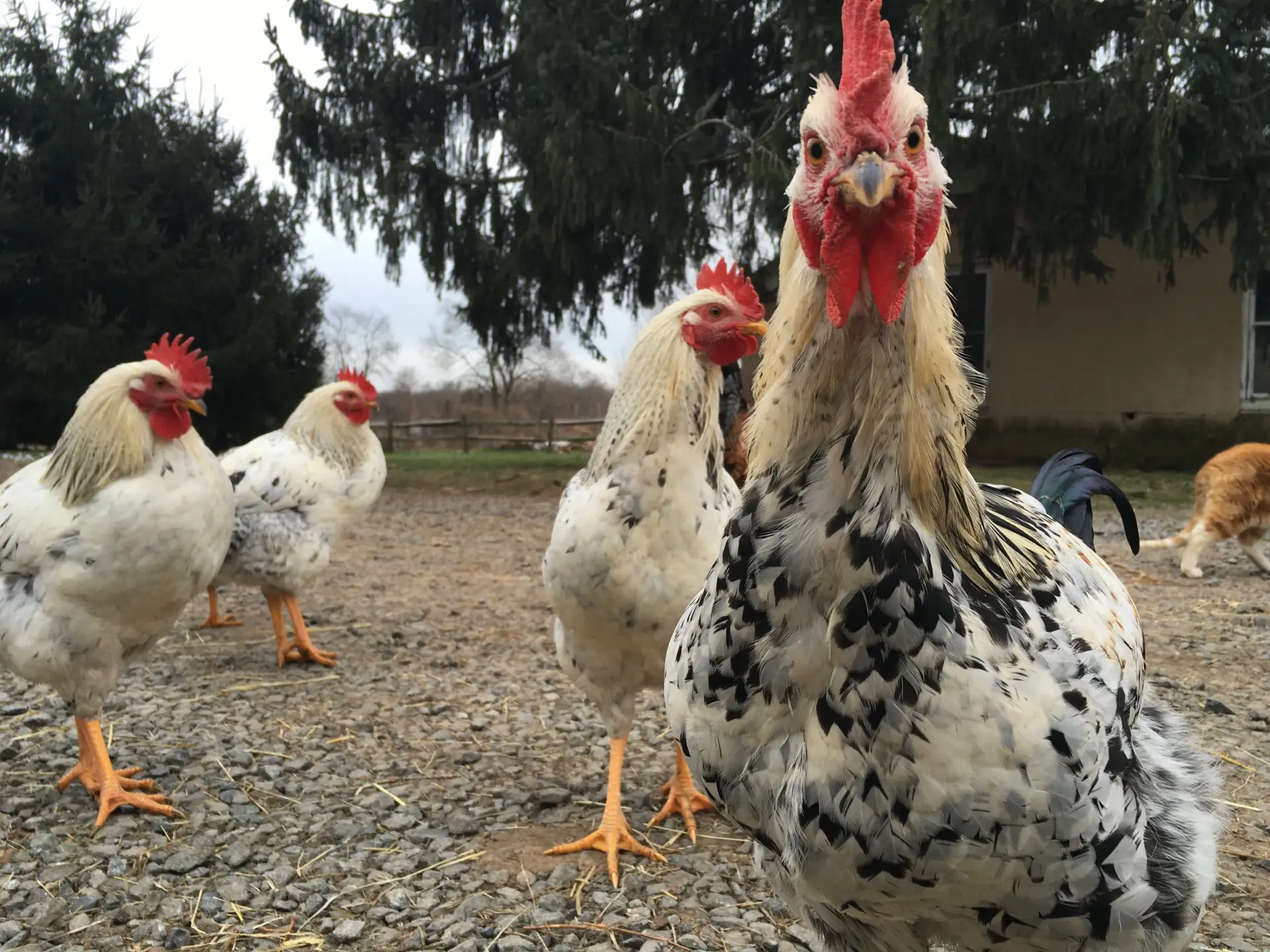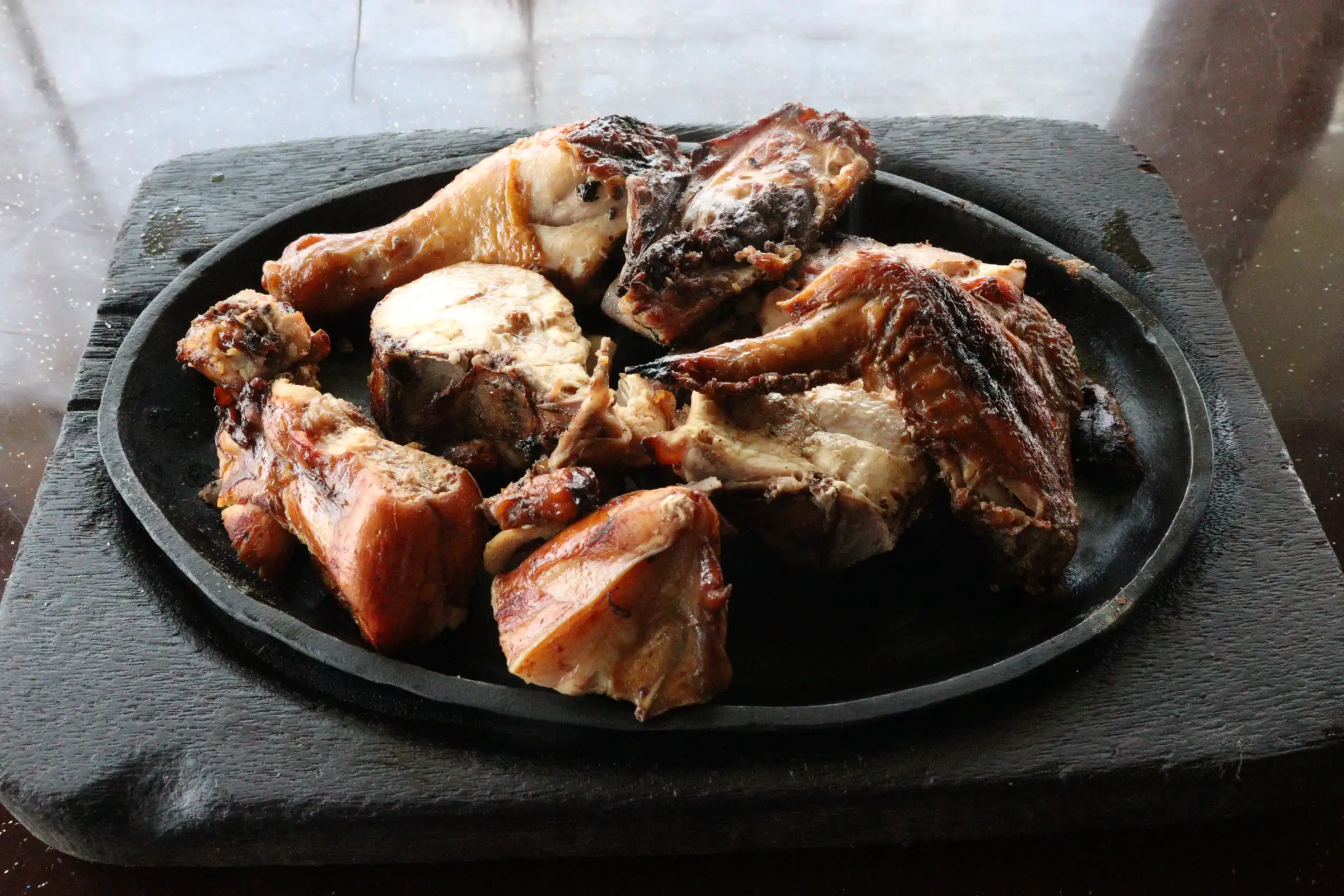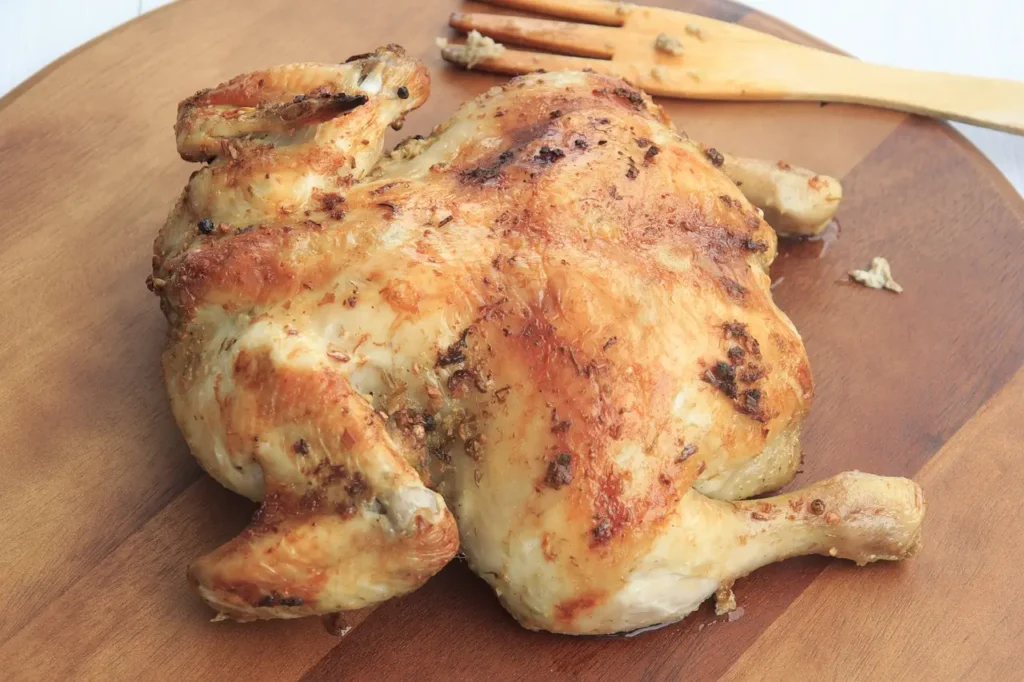Chicken
Cooking Pastured Chicken
There are 3 kinds of chicken in the world…
- the kind you buy at the store.
- the kind you get from your local or neighbor up the road.
- and the kind you raise yourself.
Chicken from the Store
This kind of chicken is raised in an industrial manner, arriving in the grocer’s cooler, wrapped in plastic and injected with brine of some kind.
If anyone has watched the documentary Food, Inc., its clear that the lives these birds lead is far from healthy, but they are generally pretty easy to cook. They have been hybridized to have larger breasts and thanks to their diet, living conditions, and all that brining, whether they’re baked, stewed, roasted, grilled, or smoked they will yield a moist end result.
Pastured Chickens
These pastured birds lead more natural lives, roaming open spaces, foraging for insects and weeds. Essentially, they have one bad day. This chicken lifestyle makes a leaner, more sinewy bird. You cannot cook a pastured bird the same way you cook a commercial bird; the result will be tough or dry after cooking.
Older birds (especially roosters) are less meaty and fatty, so they dry out easily when baked in the oven or on the grill. And heritage birds weigh less and have smaller breasts, so the white meat may dry out when roasting.
No one wants to eat tough, dry chicken, so what’s the best way to cook pastured chicken so it’s tender and juicy?
Before cooking, take the time to tenderize your chicken.

Backyard Birds
If you raise your own birds, once cleaned and plucked, place the bird in a tray or dish to catch any liquids that may leak. Cover loosely with plastic wrap and let it rest in your refrigerator for 2 to 5 days. During this resting period the muscles will relax so the meat becomes more tender after butchering.
If thawing a frozen pastured chicken, give it at least 2 to 3 days in the fridge to thaw before cooking.
Cooking Methods
There are 2 methods for cooking pastured chicken: — using wet heat or dry heat. Wet heat methods include braising, stewing, crock pot and pressure cooker. Dry heat covers baking, grilling and sautéing.
We recommend that you save both the carcass and feet of the cooked chicken for bone broth. This is the best way to get your money’s worth out of a pastured chicken!

Photo credit to Safaritravelplus. on Wikicommons.
Stewing and Crock Pot
Stewing is your best option for a tough, old bird. Simply immerse the bird in a stockpot filled with water. Bring to a boil (skimming off any foam that rises to the top), then lower heat and barely simmer for 3 to 5 hours. The water ensures a juicy bird, and any herbs or vegetable scraps you add for flavor will result in a flavorful broth, too.
Once cooked through, remove meat from the bones. Use in soups, casseroles, or chicken salad! Stewing a pastured chicken won’t result in a crown jewel to place on your table for a special dinner. But it is the way to cook a tougher, older hen.
Crock Pot is essentially stewing but at a continuously lower temperature. The water won’t come to a boil in a crock pot, but that’s not dangerous. Just set the temperature to low for 3 to 5 hours and let it stew. This is perfect for on the go families who need to set it and “forget it.”
Braising
Long, low, and slow braising is a great way to cook any lean pastured meat.. With chicken, you start with cutting up your bird. Heat a heavy enamel-coated cast iron Dutch oven over medium-high heat and add a good vegetable oil (olive, avocado, coconut) when the pan is hot. (Never add cold oil to a cold pan, or food to cold oil.)
Sear meat on all sides until golden brown, then remove meat and set aside. Keep drippings in the pan, and add any your allium (leeks, shallots, onion family) and herbs, garlic, or vegetables you desire.
Deglaze your pan with a splash of wine or cider or even water, making sure to scrape all the crisp or dark pieces off the bottom of the Dutch oven, because they add amazing flavor. Then, add broth and bring to a simmer. Add meat back to the pot. You want enough liquid to go halfway to ¾ of the way up the meat. Don’t let the liquid cover the meat or you’ll end up stewing the meat. You want to simmer the meat in enough liquid to make a flavorful sauce at the end.
Cover Dutch oven with lid, in a preheated 325-degree Fahrenheit oven for 1 to 2 hours. Once meat is cooked, remove chicken and reduce sauce by half on the stovetop in the Dutch oven. Serve chicken with generous ladles of this gorgeous sauce.
Roasting
A beautifully roasted chicken is a memorable meal. You want that golden crispy skin and juicy, flavorful meat underneath. What’s the secret? Creating a fat barrier between the bird and the heat so the meat doesn’t dry out.
Check our recipe box for two classic recipes.
Grilling
Before grilling, cut the chicken into parts and marinate for 12 to 24 hours to lock in both flavor and moisture. It’s very easy to dry out chicken on the grill, so this is important!
Grill bone-in cuts first, as these take the longest. Think long and slow instead of hot and fast. Also, avoid constantly flipping the meat. Just leave your grill lid closed and keep an eye on the temperature. You should only have to flip your meat once.
Nutrition
For more complete nutritional information visit this site.
Recipe Box
Visit our recipe box for all sorts of tips, tricks and delicious how tos.
Jacques Pepin’s Roasted Chicken
A recipe from the master himself!
View All Recipe
Stay Connected
Sign up for e-news to learn about special events and offerings.